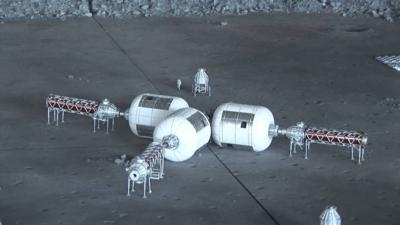Amends FY 2020 Budget Request Adding Funding For Deep Space Exploration, Science And Technology
NASA has submitted a budget amendment for fiscal year 2020 that includes an additional $1.6 billion to support its efforts to return to the Moon.

In its request, NASA points out that the President challenged the agency to land the first American woman and next American man at the South Pole of the Moon by 2024, followed by a sustained presence on the Moon by 2028.
This FY 2020 budget amendment provides an increase of $1.6 billion above the President’s initial $21 billion budget request to accelerate the return to the lunar surface. This additional investment is a down payment on NASA’s efforts to land humans on the Moon by 2024, and is required to achieve that bold objective. It’s the boost NASA needs to move forward with design, development and exploration.
For 60 years, American investment in NASA has yielded innumerable returns through advances in science, technology, medicine, education and industry. Exploring the Moon help to create a vibrant future:
- Establishes American leadership and strategic presence
- Proves technologies, capabilities and new business approaches for future missions to Mars
- Leads groundbreaking science about the Moon and the solar system
- Inspires a new generation, and encourages careers in STEM
- Drives development of technologies of the future
- Expands U.S. global economic impact; and
- Grows U.S. industry and international partnerships.
This budget amendment for NASA adds funding for deep space exploration, science and technology. Outside of descoping Gateway capabilities, no NASA programs were cut:
-
Human Lunar Landing System: This budget includes $1 billion to enable NASA to begin supporting the development of commercial human lunar landing systems three years earlier than previously envisioned to bring humans to the Moon’s surface by 2024. This acquisition strategy will allow NASA to purchase an integrated commercial lunar lander that will transport astronauts from lunar orbit to the lunar surface and back.
- Focusing Gateway development on capabilities needed to support a lunar landing of 2024 allowed a scope reduction of $321 million. This budget amendment shifts potential development of additional Gateway capabilities into the future.
- Space Launch System Rocket and Orion Spacecraft: With an additional $651 million for SLS and Orion, this budget supports the most powerful rocket in the world and our new spacecraft to ultimately take the astronauts to the staging point for reaching the lunar surface, the Gateway in lunar orbit.
- Exploration Technology: An additional $132 million for technologies that will support NASA to advance key precursor capabilities on the lunar surface. This includes various exploration technologies like solar electric propulsion and a demonstration converting polar ice to water.
- Science: An augmentation of $90 million to enable increased robotic exploration of the Moon’s polar regions in advance of a human mission.
To land American astronauts on the Moon by 2024, we are working through the acquisition approach for the various projects. Our efforts will include new work at NASA centers to provide the key technologies and scientific payloads needed for the lunar surface, adding to efforts already underway across the country.

NASA says strong commercial partnerships will accelerate its human exploration plans. International partners also remain a vital part of our lunar plan and will contribute to the goal of creating a sustained lunar presence by 2028.
Going forward, additional funds will be required in the 2020s, and a refined estimate will be submitted as part of the FY 2021 President’s budget request.
(Source: NASA. Images from file)
 Airbus Racer Helicopter Demonstrator First Flight Part of Clean Sky 2 Initiative
Airbus Racer Helicopter Demonstrator First Flight Part of Clean Sky 2 Initiative Diamond's Electric DA40 Finds Fans at Dübendorf
Diamond's Electric DA40 Finds Fans at Dübendorf ANN's Daily Aero-Term (04.23.24): Line Up And Wait (LUAW)
ANN's Daily Aero-Term (04.23.24): Line Up And Wait (LUAW) NTSB Final Report: Extra Flugzeugbau GMBH EA300/L
NTSB Final Report: Extra Flugzeugbau GMBH EA300/L Classic Aero-TV: 'Never Give Up' - Advice From Two of FedEx's Female Captains
Classic Aero-TV: 'Never Give Up' - Advice From Two of FedEx's Female Captains




